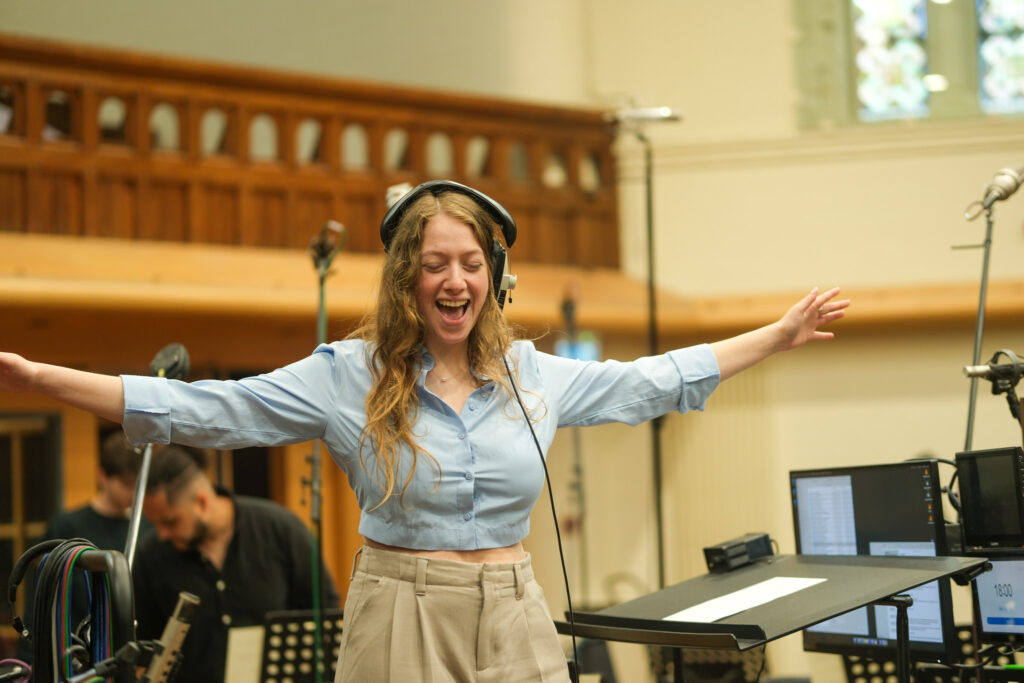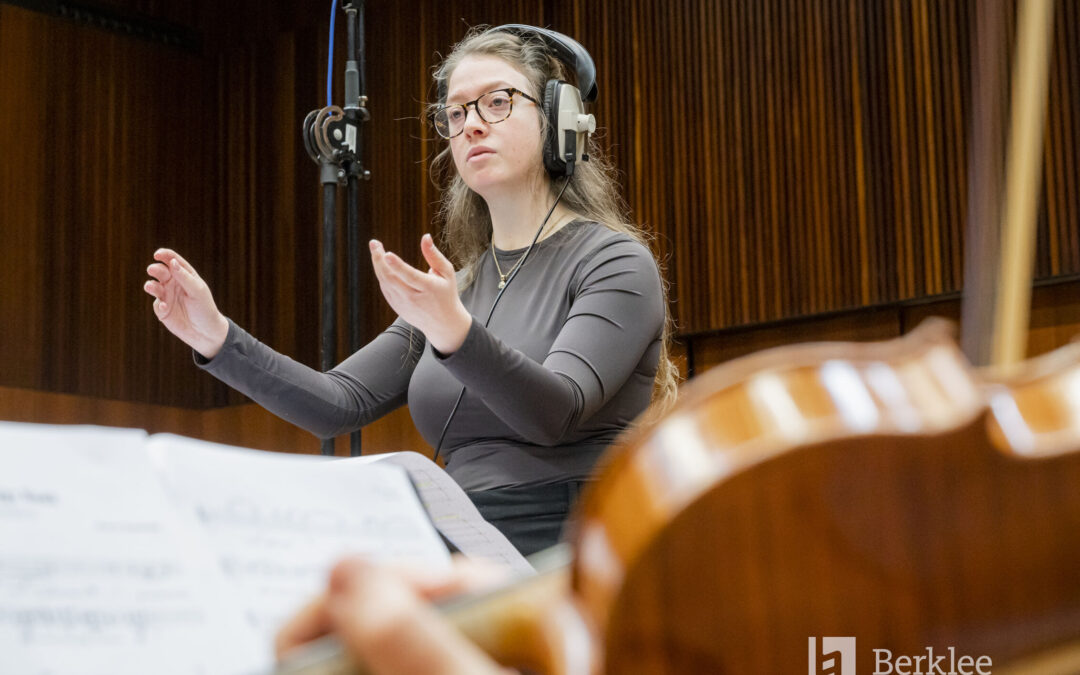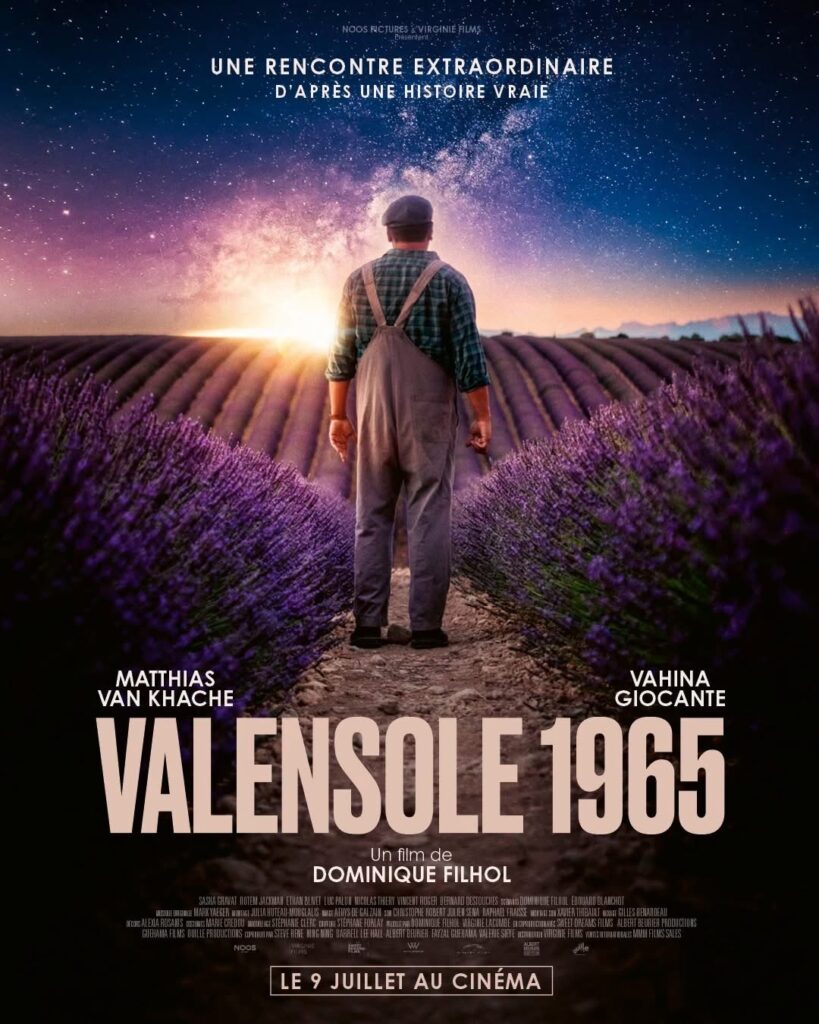Valensole 1965 is a drama directed by Dominique Filhol, who also wrote the screenplay. The film stars Matthias Van Khache and Vahina Giocante, telling the story of farmer Maurice Masse, who discovers a UFO in his lavender field at dawn that takes off at an astonishing speed, leaving traces on the ground. Inspired by the true case that unsettled France 60 years ago, Valensole 1965 unfolds as an intimate, deeply emotional retelling of a mysterious encounter.
The music was composed by Mark Yaeger (Queens of the Desert, Far Cry 5) and orchestrated by Noga Kedem. After first meeting at NAMM earlier this year, John reconnected with Noga to discuss her experience working on this project.
JB: You grew up in Haifa, sang in choirs, led bands, and later studied composition in Jerusalem and at Berklee Valencia. How did these varied musical experiences shape your creative voice as a composer, and how did you find your way into film scoring?
NK: Well, the experiences you mentioned, or to be precise, the specific combination of these experiences, is exactly what made my creative voice the way it is. Choral classical music, rock, and metal shaped me as a musician to write deep, layered music, a bit heavy, and raw. I use rhythms from metal and harmonies from classical music, and I think in a voice-leading way that tries to recapture the choral works I sang as a kid. Then the Jerusalem Academy of Music and Berklee Valencia shaped the dream into a skill; each and every teacher showed me how to execute my ideas. I’m a very “academic” personality – I study well in the “old school” class format. I went to school to learn and to become better, not for the experience or for the title. I feel like the essence was always there, but studying is what made me fully qualified to start my career back then.
JB: Tell us about how you connected with Klaus Badelt (Pirates of the Caribbean, Constantine) through Mark Yaeger after graduating from Berklee, and what it’s like working alongside such a renowned composer.
NK: Klaus and Mark are unbelievably inspiring people. Mark took me in for an internship and introduced me to Klaus. It was like watching what happens when real artistic souls meet professional high-end high-tech, sky-high professional standards, and a sky-high mountain of charisma. Sometimes we would all work together in collaboration on a cue, and those were the most interesting moments for me – to be able to bring out my voice and be a part of a true collaboration.
JB: As orchestrator for Valensole 1965, what drew you to this project? Can you share the film’s narrative and emotional core, and how your orchestration supports and enhances Mark’s composition?
NK: The main reason I was drawn to this project was Mark’s work on the composition. The big impact and breathtaking soundscapes he composed were now mine to create using an orchestra. It had a lot of room for untraditional choices. And that’s also how we told the story – a farmer, in his lavender field, sees a UFO take off at astonishing speed, in the most famous UFO case in France to this day, which shook the ground for everybody. Modern sci-fi and orchestra is such an interesting combination, it really gives room to create all these unusual sounds, trying to capture the sound of the unnatural with a modern ear.
JB: You described a collaborative studio process with Klaus and Mark that includes composing, orchestrating, production, and mock‑ups. What does your day‑to‑day workflow look like on a project like Valensole 1965?
NK: For this specific one, I was 100% on the orchestration side of things, so it was just that, and it’s a major task. For other projects, we did a few different projects during the same time period, so every day was different, jumping between them. This way, I got to jump from throwing in compositional ideas for a few days on one project, to a few days of refining mock-ups or production on another project, to days of meetings, or, of course, days of orchestrating. Sometimes it was all happening at the same time.

JB: Big film projects always come with tight deadlines. How has using Dorico for notation, mock‑ups, and revisions influenced your workflow, especially when delivering high‑quality orchestration under time pressure?
NK: That is so very much correct – as you said, it’s always a tight schedule! And Dorico’s a game-changer in that sense. Dorico has a terrific way of handling the process from DAW to notation – especially importing MIDI. I just love the advanced window for importing MIDI. Dorico does so much of the work for you in that process, and it asks you the right questions. No more importing music from a separate file into a template – here I can easily choose exactly what to import and where to. When orchestrating film music, the most important part is to have it transition smoothly and efficiently, making the process faster. Shortcuts are also arranged brilliantly, making them easy to remember, which in turn makes everything faster and easier. Most importantly, the possibilities are endless. It made my life much easier because you can control and manipulate any note in so many different and sometimes necessary ways, ways that I had been looking for in other notation software for a long time.
JB: You have a variety of credits in film scoring, not just orchestration. From award-winning shorts to feature films like The Paralytic and Six Till Midnight. What do you feel is the biggest difference between these two roles and the significance of each in your career? Do you use Dorico for composition as well?
NK: True, I am first a film composer but lately an orchestrator as well. I find it refreshing to jump between the two. Composing gives me room to write down the melodies in my head, and orchestration gives more room to the logical side of my mind to kick in, although it’s also highly creative, but in a different way. I do compose using Dorico sometimes, mostly when it comes to theatre or musical theatre. It’s great that the playback system is so advanced that it’s almost like a DAW within a notation program.
JB: You’ve spoken about being one of the few women in a male‑dominated space. How have these experiences shaped your approach to collaboration and mentorship within scoring teams and the industry at large?
NK: To be honest, I got very lucky with this one team. I found that my being a woman didn’t change anything for Klaus or Mark – which is, of course, exactly as it should be! But I know it was an extremely safe space, and that it is very rare. It is not common at all in the industry, specifically for composers, where the majority are men, and it gets worse as you go “up the ladder” and look at the bigger folks working on the biggest film projects. Up there, it’s still 95% men.

JB: Thanks for taking the time to talk with me about this project, Noga!
If you’d like to find out more about Noga’s collaborations with Klaus or Mark and to hear more of her music, please visit her website at NogaKedem.com
Valensole 1965 opened in July 2025. More details about the film, credits and where to find it are available on UniFrance.org, and the trailer is also available on YouTube.



Thanks for an interesting and engaging article, John. Any further pieces about contemporary artists or composers who utilise Dorico would be most welcome! – keep them coming!
Will do!